Electromechanical Equipments in UAE
(11 products available)Electromechanical equipments combines electrical and mechanical components to perform different functions. These systems are essential in many areas, including industrial automation, robotics, and consumer electronics. Other crucial applications of sensors include reporting data conditions that involve the environment, such as temperature or pressure. Control systems convert and transmit this data to monitor and regulate the equipment. Controllers or PLCs often manage these systems for precise control and automation. This type of equipment is simply necessary for the modern engineer because of its reliability and flexibility. It stretches from home appliances to sophisticated machinery. This technology has advanced significantly. It now integrates smart features and uses advanced materials. As a result, it can improve and expand into various industries. If you are looking for Electromechanical Equipments in UAE.TradersFind helps you connect with top manufacturers across UAE. They offer many types of equipments for your business at reasonable prices. Our complete listings and product details help you find the list of Electromechanical Equipments suppliers in UAE for your needs.
Electromechanical equipments combines electrical and mechanical components to perform different functions. These systems are essential in many areas, including industrial automation, robotics, and consumer electronics.
Other crucial applications of sensors include reporting data conditions that involve the environment, such as temperature or pressure. Control systems convert and transmit this data to monitor and regulate the equipment. Controllers or PLCs often manage these systems for precise control and automation.
This type of equipment is simply necessary for the modern engineer because of its reliability and flexibility. It stretches from home appliances to sophisticated machinery.
This technology has advanced significantly. It now integrates smart features and uses advanced materials. As a result, it can improve and expand into various industries.
If you are looking for Electromechanical Equipments in UAE.TradersFind helps you connect with top manufacturers across UAE. They offer many types of equipments for your business at reasonable prices. Our complete listings and product details help you find the list of Electromechanical Equipments suppliers in UAE for your needs.
Electromechanical equipments combines electrical and mechanical components to perform different functions. These systems are essential in many areas, including industrial automation, robotics, and consumer electronics.
Other crucial applications of sensors include reporting data conditions that involve the environment, such as temperature or pressure. Control systems convert and transmit this data to monitor and regulate the equipment. Controllers or PLCs often manage these systems for precise control and automation.
This type of equipment is simply necessary for the modern engineer because of its reliability and flexibility. It stretches from home appliances to sophisticated machinery.
This technology has advanced significantly. It now integrates smart features and uses advanced materials. As a result, it can improve and expand into various industries.
If you are looking for Electromechanical Equipments in UAE.TradersFind helps you connect with top manufacturers across UAE. They offer many types of equipments for your business at reasonable prices. Our complete listings and product details help you find the list of Electromechanical Equipments suppliers in UAE for your needs.
View less
- Usage : Industrial
- Material : MS
View more...
Delcotec Electromechanical Equipment
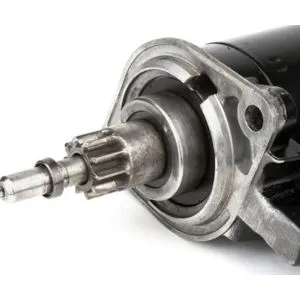
- Product Range : Extensive spare parts available
- Quality Assurance : Stringent quality policy
View more...
Royal Space General Trading LLC
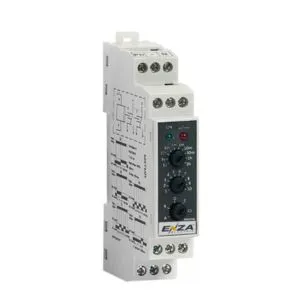
- Usage/Application : Industrial
- Color : white
View more...
Al Mayar Electric Switchgear Ind LLC
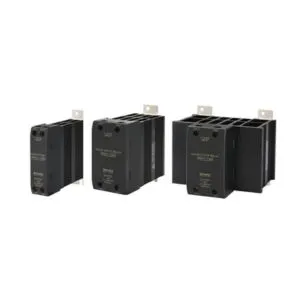
- Input Indicator : Green LED
- Input Voltage : 4 to 30 VDC, 90 to 240 VAC
View more...
Instruhub
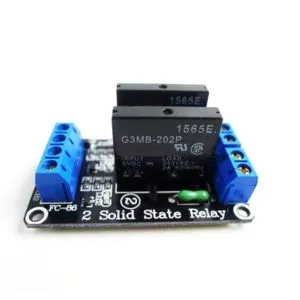
- Control Signal Voltage : 0-2.5V (OFF), 3.3-5V (ON)
- Input Power Supply : 5V DC (160mA)
View more...
Besomi Electronics Group
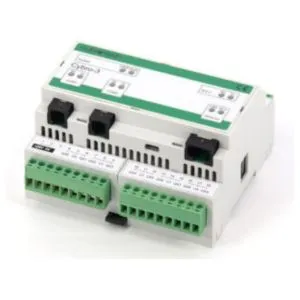
- Programmable Controller : Versatile controller
- Opto-Coupler Inputs : 12 inputs, 24V
View more...
Texair Fzco
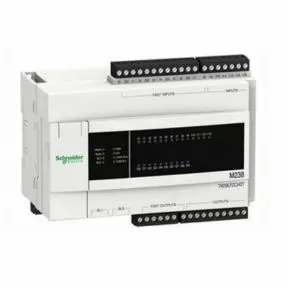
- Output Type : Digital
- supply voltage limits : 220V
View more...
Perfect Automation And Innovation
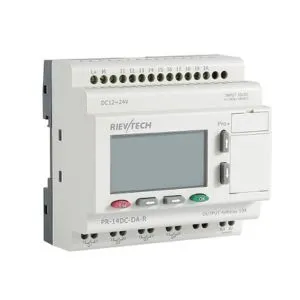
- Applications : Industrial Sectors
- Input Type : Opto-coupler inputs (12/24V)
View more...
KMC Oil And Gas Equipment LLC
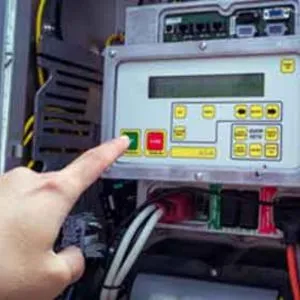
- Product Name : Programmable Logic Controller (PLC)
- Output Type : Relay outputs (8A per output)
View more...
Power Hub Electrical Trading LLC

- Product Type : All types of Condition Monitoring Products
- Compatibility : Various Equipment Types
View more...
An easy way to post your sourcing requests and get quotes.
- One request, multiple quotes
- Verified suppliers matching
- Quotes comparison and sample request
Electromechanical Equipments in UAE
Electromechanical equipments in UAE is a industry in construction and manufacturing and energy sectors as well. The industry encompasses, primarily, motors, generators, transformers, control systems amongst others which are highly crucial for automation and efficiency. Rapid urbanization with significant investments in infrastructure, especially in oil and gas, renewable energy projects, and smart city projects, makes these technologies highly sought after in the market. In any case, the strategic positioning of UAE remains an enhancer of its role as a trading hub attracting international electromechanical equipments manufacturers. Innovations and sustainability initiatives by the government also spur further growth of electromechanical equipment as an industry within the region.
Types of Electromechanical Equipments
Electromechanical equipments are used widely across various industries in United Arab Emirates (UAE). We classify it generally as equipment composed of electrical and mechanical parts that is widely used for crucial functions. For its reliable economic growth and diversification, the need for a variety of electromechanical equipment is becoming highly imperative. We further classify the most commonly used electromechanical equipment UAE across many industries in the following manners:
Motors and Drives
Motors are among the most important constituents of many electromechanical systems. They convert electrical energy into mechanical motion and have applications wherever motion is necessary. There are two types of motors: AC (alternating current) and DC (direct current) motors.
• AC Motors: Industries extensively use these in applications such as pumps, fans, and compressors. These motors have a long life and have minimal electromechanical equipments maintenance requirements.
• DC Motors: These offer better speed control and electromechanical equipments distributors typically use them in applications that require precise motion. Among others, some examples include conveyor systems and robotics.
Generators
Generators convert mechanical energy into electrical energy. In UAE, generators provide backup power and serve as primary energy sources. They are especially important in remote areas or during power outages.
Generators are essential in the construction and oil and gas industries. They are also crucial for events that require a steady supply of electricity.
Transformers
Transformers are one of the many integral parts of a distribution system. Transformers mainly change voltage levels. This process is crucial for efficient power transmission from power plants to consumers.
In UAE, transformers are used in commercial buildings, residential areas, and industrial facilities. They help ensure stability and safety in the electrical supply network.
Switchgear
Switchgear is the term used for a group of electrical disconnect switches, fuses, or circuit breakers. Switchgear plays a key role in distributing, controlling, protecting, and isolating electrical equipment. One of the crucial components in power generation and electricity distribution networks.
In UAE, switchgear forms the backbone of electrical systems. Vital for maintaining safe and reliable operations.
HVAC Systems
Heaters, ventilators, and air conditioners are the main components of an HVAC system. These systems help maintain comfortable indoor temperatures in buildings and industrial setups.
In the hot climate of UAE, efficient HVAC systems are important. They are essential not only for homes but also for commercial spaces.
Electromechanical components in an HVAC system include the compressor, fan, pump, and chiller. Others ensure temperature, humidity, and air quality control. As energy-efficient HVAC systems gain importance, industries use advanced secure electromechanical equipment more often.
Sensors
Sensors measure several physical parameters, such as temperature, pressure, and humidity. They report this data in real-time, allowing for timely decision-making and process control. Electromechanical equipments suppliers provide a variety of sensors for applications in automation, manufacturing, automotive, and environmental monitoring, enhancing efficiency and accuracy.
Control Panels
A control panel houses control systems and their components. These systems operate electromechanical equipment. It acts as an interface for the operators when monitoring and controlling processes. Different industries in UAE, from manufacturing to power generation, use control panels.
UAE’s Market Trends in Electromechanical Equipments
The electromechanical equipment market in UAE is experiencing rapid growth for various reasons. The nation is putting a lot of money into developing infrastructure, such as roads, structures, and transportation. This leads to a high need for electrical and mechanical components. Furthermore, UAE is striving to establish itself as a source of renewable energy. This indicates a greater need for additional solar panels, wind turbines, and other energy-efficient devices.
Growth of Smart Cities and IoT
UAE is currently in the development stage of smart cities. The cities themselves work with advanced technology to make life better in a city. Smart systems interact with urban infrastructures to provide better services. They make cities safer and more efficient as well as connect them better.
Electromechanical machinery equipment also plays a major role in this. It assists in managing lighting, traffic, and public transport. For example, the adjustment of smart traffic lights in real-time reduces congestion. Such technology essentially requires these systems for proper working.
IoT is also one of the prime components of a smart city. IoT interlinks devices and systems, which let them communicate with each other. This calls for reliable electromechanical components to enable the seamless functioning of such integrated devices and systems. Such equipment will only continue to demand more over time as cities become smarter.
Emphasis on Sustainability
There is a strong focus on sustainability in UAE. The demand for green and energy-saving equipment is high. Electromechanical equipments companies in UAE and state agencies want to reduce their carbon footprint, save energy, and enhance energy efficiency.
Electromechanical equipment manufacturing is key to achieving sustainability. One of the various devices includes an energy-saving motor or an HVAC system that helps reduce energy consumption. Companies need other high-level solutions as they aim to be greener.
Government policies are also in favor of such a market trend. There are policies for the use of renewable sources of energy and energy-efficient technologies. As a result, companies will increase the demand for sustainable equipment.
New Technologies
Innovations in the products of the electromechanical equipment market are transforming them anew. AI, robotics, and automation are some of these innovative pieces of technology. The efficiencies of an electromechanical system increase manifold with these new technologies.
For example, AI can optimize machine operations. It refers to predictive electromechanical equipments maintenance that aims to avoid the costs that ensue when a machine is in operation.
Companies adopting these new technologies require advanced electromechanical machinery equipment. This is what keeps the market thriving and thus makes it possible for this industry to boom after the pandemic.
Post-pandemic Infrastructure Boom
Now, COVID-19 changed the world and yet it welcomed a boom in infrastructure projects. United Arab Emirates has large investments in new and ongoing projects. This includes roads, bridges, and buildings.
The construction industry will require electromechanical equipment. This way, the construction will be safely and smoothly carried out. As infrastructure investment increases, we can predict a rise in demand for electromechanical systems.
As development in UAE continues, we expect the demand for reliable and efficient equipment to grow. The post-pandemic boom in infrastructure will thrust forward this market's demand.
Government Initiatives
The country's government initiatives in UAE are significantly affecting the growth of the electromechanical equipment market. Among the national strategies in support of the infrastructure is UAE Vision 2021, being a competitive and innovative economy.
In various sectors, the government is promoting advanced technologies. Included in these are the energy, transportation, and construction sectors. Encouraging infrastructure development helps boost the demand for secure electromechanical equipment.
UAE also strives to diversify its economy. This will present new opportunities for the suppliers of electromechanical equipment. As different industries grow, they will need reliable and efficient equipment to support their operations.
Source for the above data:
https://analysis.technavio.org/electromechanical-components-market-analysis
Key Sectors Utilizing Electromechanical Equipments in UAE
Electromechanical equipments plays an important role in many industries in UAE. The reason for this is linked to the fast development pace and ambitious plans of the country. Below are the main sectors using electromechanical equipments:
Construction and Real Estate
The construction and real estate sector is growing in UAE. Huge projects like skyscrapers and smart cities drive this growth. The tallest buildings, such as the Burj Khalifa in Dubai, rely on electromechanical equipment. This equipment supports elevators, escalators, HVAC systems, and lighting controls.
As urban sprawl ensues with the formation and growth of cities, developers are now concentrating on smart city initiatives. These projects combine advanced technology and these systems to ensure energy efficiency, sustainability, and linking.
For instance, In smart buildings, automation controls lighting, temperature, and security using various components. This growth in the construction and real estate sector creates a high demand for advanced solutions. These solutions must support and meet the unique needs of various projects.
Oil and Gas
The oil and gas industry is still one of the most critical sectors of UAE economy. The extraction, refining, and transport of energy all involve electromechanical processes. From the drilling rig to offshore platforms, electromechanical equipment is critical machinery that extracts crude oil and natural gas.
In refining, these systems control the heating, cooling, and mixing of chemicals. This ensures the process is efficient, safe, and environmentally friendly.
Oil and gas pipelines, pumps, and compressors also rely on these components to operate smoothly and function properly. As UAE develops its oil and gas sector, the demand for advanced equipment will continue to grow.
Renewable Energy
Recently, UAE has invested much in renewable energy projects, especially focusing on solar and wind energy. This shall reduce dependence on fossil fuels, as well as diversify the energy mix. Electromechanical systems form a significant area regarding the harvesting of renewable energy efficiently.
For example, solar power stations operate on electromechanical equipment tracking the solar energy arrays as well as transforming solar energy into electrical energy. Wind farms use high-tech equipments to control the motion of the turbines. These devices help produce the maximum amount of energy.
UAE's nuclear plans also highlight the importance of this equipment. It plays a crucial role in ensuring the safe and efficient operation of nuclear power generation complexes.
The nation is moving toward sustainability. As it does, the use of electromechanical systems in renewable energy will grow even more. Such achievements will raise demand for this product.
Manufacturing and Industry
UAE manufacturing base is improving rapidly. Automation and technology are driving this growth. This advancement helps UAE become a leader in competitive products. In modern factories, this equipment assists in the process of automation of operations, efficiency, and savings of labor costs.
Electromechanical systems have many uses in various industries. They are essential for manufacturing products on conveyor belts, robotic arms, and automatically controlled assembly lines.
These systems streamline production processes. They help produce high-quality electromechanical equipment and allow for quick adjustments to market changes.
Transport and Infrastructure
The transport and infrastructure sector in UAE has a high demand for heavy-duty electromechanical systems. These systems are essential for railway, metro, and airport facilities.
In Dubai, the metro system and high-speed rail networks rely on advanced components. These include signaling, power distribution, and automated control systems.
At airports like Dubai International and Abu Dhabi International, electromechanical equipment is crucial. It supports baggage handling, boarding systems, and security checks. This equipment helps maintain working efficiency and ensures passenger safety.
As investments in transportation infrastructure continue, the demand for electromechanical companies will keep rising in the country.
Technological Innovations in Electromechanical Equipment
The electronic manufacturing sector is seeing fast expansion due to recent innovations in component design technology and fabrication methods. Utilizing advanced materials such as organic electronics is crucial for achieving both miniaturization and sustainability in the manufacturing process.
Startups are integrating AI and IoT into their design and manufacturing procedures. Every year, as more functions are being added, the size of chips is decreasing thanks to advanced circuit packaging. There are ongoing developments in system architectures and designs to meet the need for adaptable and personalized embedded systems. Printed electronics and 3D printing enable decentralized manufacturing and quick prototyping.
Listed are the most recent advancements in innovation within the electro-mechanical sectors.
Organic electronic devices
The popularity of organic electronics is increasing because they are inexpensive, adaptable, long-lasting, see-through, lightweight, and energy-saving. They offer increased safety and easier access compared to traditional inorganic choices, opening up potential new business prospects and competitive edges. The tendency involves integrating microbial elements and biodegradable, recyclable substances into electronic gadgets. Flask is a dependable source of versatile materials for organic displays, lighting, and solar cells.
The top electromechanical equipments manufacturers always aim to deliver organic devices with high-quality standards to meet the increasing technical requirements of businesses.
Artificial Intelligence
AI is transforming the semiconductor industry through advancements in design procedures and product development timelines. It also allows for predictive maintenance to reduce lead time. This technology plays a critical role in the electronics manufacturing sector. Cybord’s software, powered by AI, conducts component inspection and oversees material sourcing, manufacturing, and defect control. It guarantees genuineness and unchanged parts, which is advantageous for electronics firms.
Internet of Things
The Internet of Things provides fresh opportunities for the manufacturing of electronics, including enhanced manufacturing techniques and automated machinery. Sensors play a crucial role in IoT applications, and as 5G grows in popularity, there is a demand for more effective chip designs. The skill set simplifies the design process and cuts down on development time for electromechanical equipments dealers UAE.
Advanced Materials
The semiconductor sector is researching novel technologies and materials to enhance the performance of integrated circuits. Startups are creating options for silicon, such as graphene and nanomaterials, to improve efficiency. The technology is capable of managing voltages ranging from 1,000 V to more than 10,000 V. Water Front Graphene produces high-quality graphene for the electronics industry, used in touch panels, conductive ink, 3D printing, supercapacitors, thermal materials, and semiconductors.
Embedded Systems
Embedded systems play a vital role in the speed, security, size, and power of electronic devices. The increasing popularity of these systems in an interconnected world is driving advancements in their design and production. Microsystems provides security custom electromechanical solutions that safeguard devices from network-based attacks by focusing on the processor level. Electromechanical equipment rental services offer essential tools for developing embedded systems, facilitating prototyping, testing, and production for various industries efficiently.
3D printing technology
The use of 3D printing in the electronics industry enables the creation of groundbreaking designs and fully operational consumer electronics, speeding up the development of prototypes and personalized mass production.
3D Nanosystems provide atomic layer 3D printing for manufacturing micro and nanodevices with atomic precision.
Advanced IC Packaging
Limitations in scaling devices based on Moore's law are driving the development of new advanced IC packaging technologies. IC packaging enables more silicon integration in small packages and custom electromechanical solutions, while also optimizing production expenses.
Electromechanical Equipments Installation and Maintenance
Electromechanical equipments is comprised of both electrical and mechanical parts. Some illustrations of electromechanical equipment are HVAC systems, elevators, escalators, generators, and other intricate machinery. The safe and efficient operation of these systems is dependent on proper electromechanical equipments installation and maintenance. Below are some guidelines for the installation and upkeep of electromechanical equipment:
Installation
Always adhere to the manufacturer's guidelines when installing electromechanical equipment. This will guarantee the proper installation of the equipment and ensure its safe and efficient operation.
• Proper grounding: Adequate grounding is necessary for electromechanical equipment to avoid electric shocks and other electrical risks. Make sure the equipment is properly grounded by local regulations and norms.
• Correct positioning: Improperly aligned machinery can lead to early deterioration, shaking, and other problems. Make sure the equipment is correctly positioned and leveled when installing.
• Quality parts: Utilize superior components and parts when installing. Inferior or budget parts may result in early breakdowns and additional issues.
Maintenance
• Regular inspection: Frequent examination of electromechanical equipment can help detect possible problems before they escalate into significant issues. Examine parts like belts, bearings, motors, and wiring for indications of wear, harm, or rust.
• Lubrication: It is necessary for the proper operation of numerous electromechanical components. Utilize the appropriate lubricant type and quantity as indicated by the manufacturer.
• Cleaning: Regular maintenance can prevent the build-up of dust, dirt, and debris on electromechanical equipment, which may lead to functionality problems. Use a dry cloth to clean the equipment's surface.
• Testing: Electromechanical equipment regularly can aid in verifying their proper functionality. Utilize diagnostic instruments and gear to verify functionality and efficiency.
• Hiring a professional: If you are unsure about maintaining electromechanical equipment, it's recommended to hire a licensed professional. They possess the expertise and experience necessary to safely and effectively pinpoint and resolve any issues with electromechanical equipment.
Choosing the Right Electromechanical Equipment for Your Project
Selecting appropriate electrical equipment and materials for your building project is essential, necessitating thorough planning and coordination. Factors to be taken into account include design specifications, budget constraints, safety standards, availability, and compatibility of electrical components.
Determine the load requirements
The initial phase involves identifying the load demands of your project, such as the power and current needed for your electrical system to provide. Estimate the load requirements by utilizing load calculation methods like the branch circuit method, the feeder method, or the total connected load method. Consider the diversity factor, demand factor, and power factor when determining the actual load on the system. Depending on the demands of the load, you can select the suitable voltage level, conductor size, and circuit protection devices for your project.
Select the equipment and materials
The quality, performance, durability, and efficiency of electrical equipment and materials should be taken into account, along with their adherence to applicable codes and standards. Transformers, switchgear, cables, lighting, outlets, and fixtures are all essential electrical equipment and materials required for your project. The type, size, rating, and connection of the transformer should be selected according to the voltage needs and load characteristics of your project.
Furthermore, when selecting the switchgear for your project, it is important to consider factors such as type, size, rating, and configuration to ensure proper protection, coordination, and suitability for your load characteristics. In addition, factors such as the type of cable, its size, insulation, and installation method should be taken into account depending on the voltage level, current rating, environmental conditions, and routing needs of your project.
Additionally, the choice of lighting type, size, wattage, color, and control system should be determined by the specific lighting needs, energy efficiency, and visual appeal of your project. Finally, the selection of outlets and fixtures should be determined by the load requirements, safety standards, and convenience of your project.
Compare the costs and benefits
The next step involves evaluating the expenses and advantages of the various choices of electrical gear and materials you have chosen. It is important to factor in the initial cost, operating cost, maintenance cost, and life cycle cost of electrical equipment and materials, along with their advantages in terms of reliability, functionality, safety, and sustainability. Tools like cost-benefit analysis, life cycle analysis, and payback analysis can be utilized to assess the costs and benefits of various options. After comparing, you can select the most budget-friendly and advantageous choice for your venture.
Coordinate with other disciplines
The next step is to collaborate with other fields working on your project, like architecture, structure, heating, and plumbing. To guarantee compatibility and integration, you must communicate and collaborate with them on the electrical equipment and materials selected for your project to work with other systems and components. You must also address any conflicts or inconsistencies that may occur between the various disciplines, such as space assignment, load distribution, cable routing, or placement of outlets and fixtures.
Procure the equipment and materials
The next step involves obtaining the selected equipment and materials required for your project. You must get ready and hand in the procurement paperwork, like specifications, drawings, bills of quantities, and contracts, to the electromechanical equipments suppliers or contractors. You must also examine and authorize the submissions, such as the shop drawings, datasheets, test reports, and certificates, that are provided by suppliers or contractors. You must also supervise and examine the arrival, storage, and management of the equipment and materials to verify they are in proper condition and meet quality requirements.
Install and commission the equipment and materials
The final task is to set up and start using the equipment and materials that you have purchased for your project. It is necessary to adhere to the installation guidelines, safety measures, and recommended methods for using electrical equipment and materials, along with following the codes and standards. You must also assess and confirm the operation, efficiency, and security of the electrical devices and supplies, along with how they align and work with the other elements and systems in your project. It is also necessary to document and record the process of installation and commissioning, along with the results and observations, for future reference and maintenance.
Find the best Electromechanical Equipments manufacturers in UAE on TradersFind
TradersFind is a reliable platform for those who are looking for electromechanical equipments in UAE. You can find different verified electromechanical equipments suppliers in UAE. You can get the complete details such as contact details, location, or WhatsApp number.
Through that, you can get in touch with electromechanical equipments manufacturers in UAE. In short, TradersFind is the best place to easily connect with the top companies across UAE.
Frequently Asked Questions (FAQs)
Q1: What is the maintenance of electromechanical equipment?
A1: Electromechanical maintenance is the routine examination, evaluation, fixing, and maintenance of electrical and mechanical parts in equipment and systems. It includes a variety of tasks aimed at avoiding system malfunctions, improving efficiency, and prolonging the lifespan of machinery.
Q2: What are the common applications of electromechanical equipment?
A2: These are applied largely in industries like manufacturing, automation, transportation, renewable energy, and building services.
Q3: What are the most common types of electromechanical devices?
A3: Common types include electromechanical devices such as electric motors, generators, solenoids, relays, transformers, and sensors that carry out assigned functions to electrical and mechanical systems.
Q4: How does an electric motor work?
A4: An electric motor converts electrical energy to mechanical form via an electromagnetic principle. Electric current flowing through a coil of wire generates a magnetic field interacting with permanent magnets to cause rotation .
Q5: What factors are involved in the selection of electromechanical equipment?
A5: The primary criteria are capacity to handle load, efficiency, environment under which the equipment is to operate, size, and compatibility with systems installed already. Special application requirements should be considered also.
Q6: What is the difference between AC and DC motors?
A6: Since AC motors are used in operating with alternating current, and because of the wide use of industrial electromechanical equipment, the other type of motor is only used with variable speed control for applications of direct current and therefore DC motors.
Copyright © 2024 Interconnect Marketing Management L.L.C All rights reserved.















